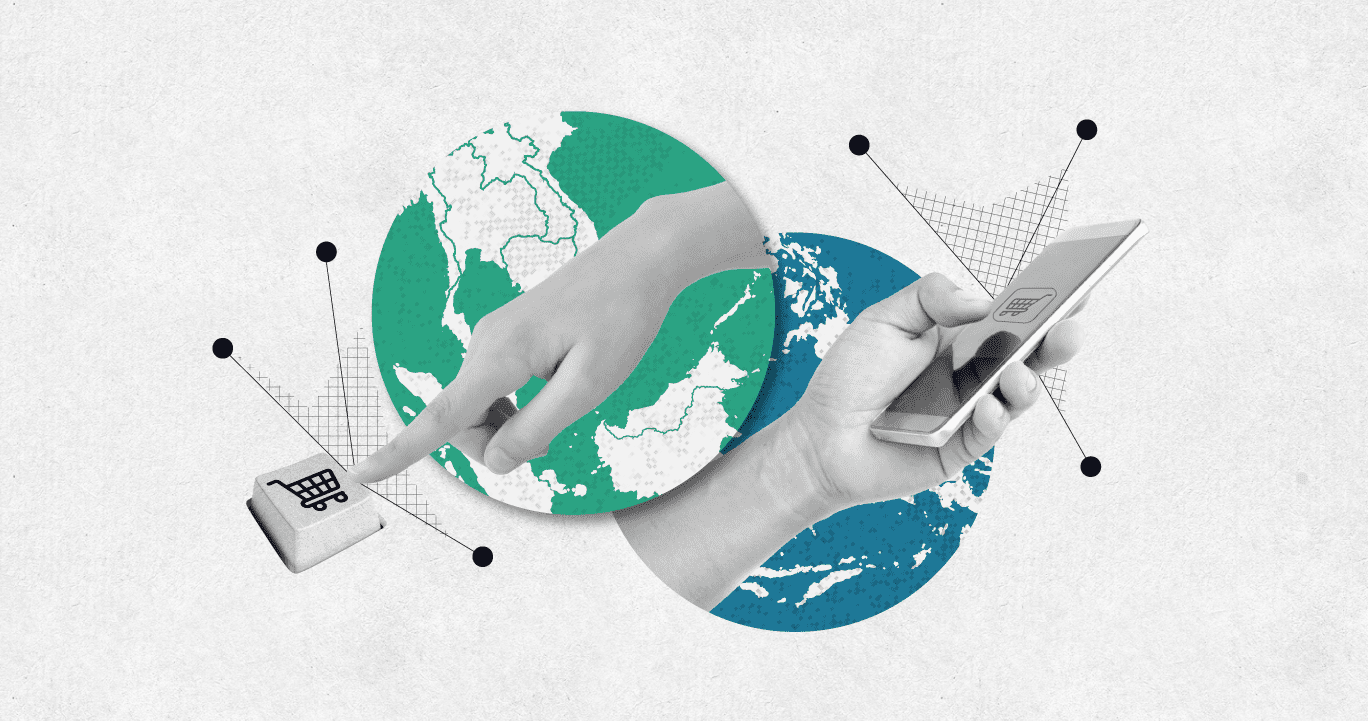MANILA, PHILIPPINES — As the digital economy in Southeast Asia continues its rapid growth, ecommerce is becoming an integral part of life. To understand the evolution of the region’s online shoppers’ habits, every three to five years online shopping aggregator iPrice conducts a study of online consumer behavior. The most recent study, “The State of Online Shoppers in Southeast Asia 2021/22,” is based on data from 125 million unique users on iPrice Group websites supporting e-commerce across six key SEA markets (Indonesia, Philippines, Thailand, Vietnam, Malaysia, and Singapore). Data was collected from January 01, 2021 to April 30, 2022.
Over the next month, iPrice will be sharing a series of insights from the 2021/22 study, looking at the changes in online consumer behavior. The most recent study traces the impact on online shoppers of the rapid rollout of mobile broadband networks; the continued development of smartphones; and, the impact of the Covid-19 pandemic.
In this first article, iPrice shares three key insights which signal the rapid shift in the region’s e-commerce towards a “mobile only” world:
Consumers more comfortable buying on mobile
In “The State of Online Shoppers in Southeast Asia 2016/17,” there is an observed high level of mobile usage but a strong preference for making purchases via desktops. Five years ago, consumers were much more likely to buy online via their desktop computers than using their mobile devices.
Times have changed – and so have consumer preferences. Today, online shopping across most Southeast Asian markets has shifted to smaller devices. Mobile purchases are now almost two times higher than those on desktops. On average, 5% of visitors to iPrice site via a mobile device end in a transaction, compared to only 3% of visitors using a desktop.
“Mobile purchases are now two almost (2x) times higher than those on desktops.”
iPrice points to several macro trends which have driven this shift:
- The rapid roll-out of mobile broadband, and a wider and more affordable range of internet-enabled mobile devices (smartphones/tablets), have made it easier for consumers to browse and buy online.
- Ecommerce providers have optimized their websites for smaller devices and launched mobile apps for an improved customer experience.
- Online stores have invested heavily in marketing initiatives to encourage mobile purchases. Some ecommerce players drive users to mobile via exclusive e-wallet features not available to desktop users, whilst others offer coupons exclusive to mobile users or discounts for first-time purchases via handheld devices.
- Vietnam is the exception to this trend. In this market, customers browse heavily on mobile, but still prefer to make the final purchase on desktop. iPrice hypothesizes consumer browsing patterns and relatively underdeveloped mobile platforms explain this behavior.
- Most Vietnamese online shoppers appear to be actively browsing during work hours and are therefore more likely to be using their office desktops to complete their purchases.
- Compared to other countries in Southeast Asia, the push for mobile adoption is not as aggressive in Vietnam. Several popular merchants, such as The Gioi Di Dong and FPT, do not have mobile apps. Users can still access the e-commerce store via mobile, but many turn to the desktop version, where the larger screen allows for a more comfortable browsing and buying experience. On the desktop, consumers have a comprehensive view of information, such as product specifications and payment details, which creates more confidence in the purchase.
Indonesia – Now a mobile-only market
As mobile use increases across the whole region, Indonesia is fast becoming a mobile-only ecommerce market. In our 2021/2022 study, iPricce found 94% of shoppers use mobile to browse and search for products, up 16% from 2016/2017. Further, mobile consumers are likely to purchase almost twice as many things compared to those on desktops. This represents a complete reversal of the 2016/2017 data when desktop-based purchases were almost three times more likely than on mobile devices.
“In our 2021/2022 study, we found 94% of Indonesian use mobile to browse and search for products, up 16% from 2016/2017.”
Indonesia is a Southeast Asian success story in the digital economy. Its seven “unicorn” e-commerce start-ups have transformed the country’s online browsing behavior, driving millions towards mobile platforms. “We Are Social Indonesia” survey revealed that 96% of respondents owned a smartphone, compared to 67% ownership of desktop computers or laptops.
Faster internet, wider coverage, and access to affordable devices are all key contributors to a hyper-connected online community. As one of the early adopters of ewallets in the region, Indonesian consumers are also more confident in making purchases through mobile payment systems.
Desktop — Still a role in ecommerce
Although online shoppers in SEA are increasingly comfortable on mobile, desktop still plays a key role in ecommerce, especially in Malaysia, Singapore, and the Philippines, where device penetration is high.
In these markets, online shoppers show hybrid browsing and buying patterns, moving across multiple platforms as they transition through the purchase funnel (Awareness, Research, Decision to Purchase):
- Product search and “casual browsing” via mobile during their daily commute
- Detailed research – product images, specifications, and price comparison – via desktops at work
- Purchase via tablet at home in the evening
- Ecommerce companies track this user behavior to tailor and target their marketing strategies. From in-depth reviews to technical information and product specifications, content needs to be adapted according to the stage in the buying journey.
Detailed product guides are effective in attracting customers during the awareness and research stage. Email marketing campaigns and remarketing can be effective in converting those who have added products to their cart without checking out.
In the next report on “The State of Online Shoppers in Southeast Asia – 2021/2022,” iPrice will take a deeper look at the purchase data to reveal which country’s shoppers spend the most, and when they’re spending it. From average basket sizes to the most popular times to make purchases, iPrice will reveal the shopping behavior of today’s e-commerce consumers.













